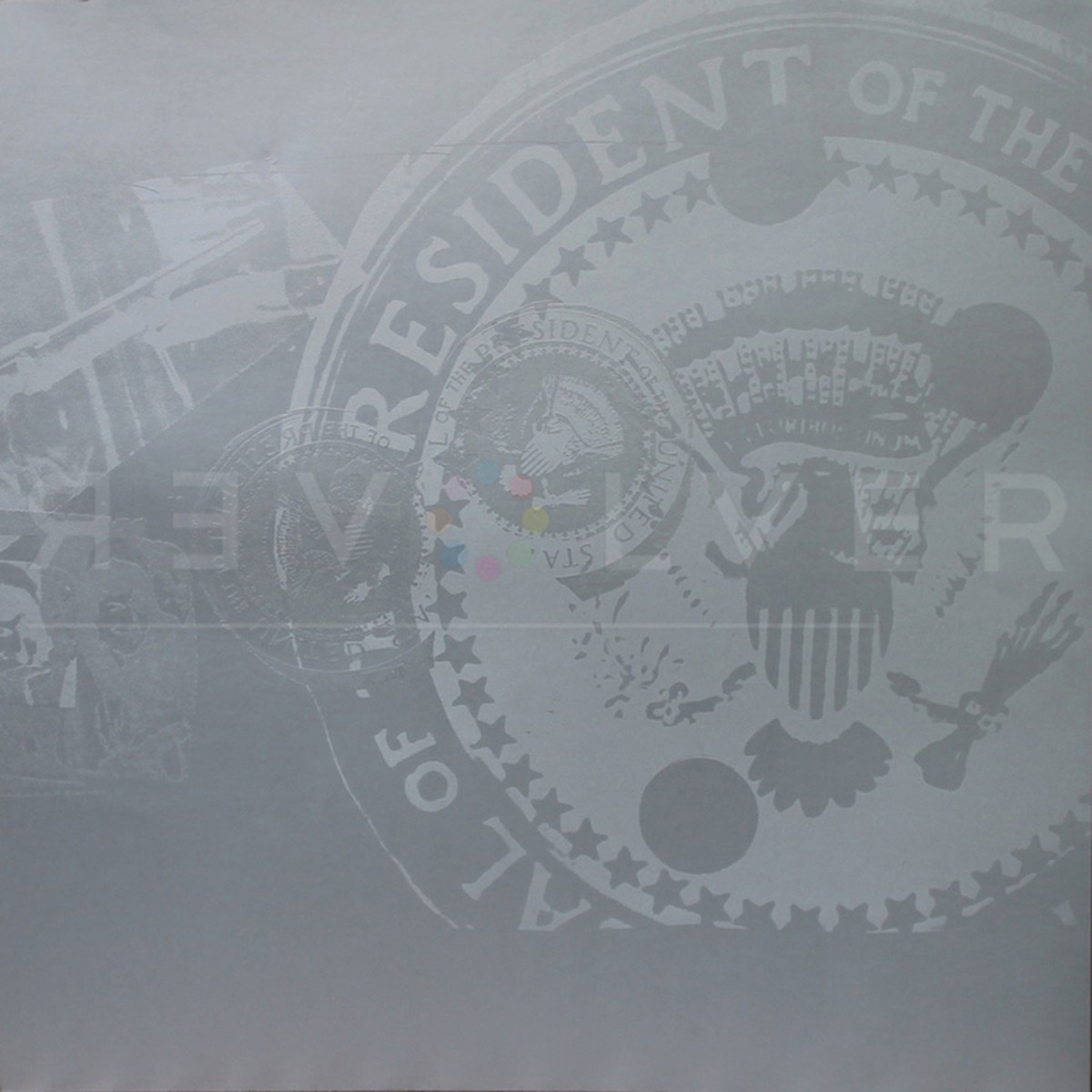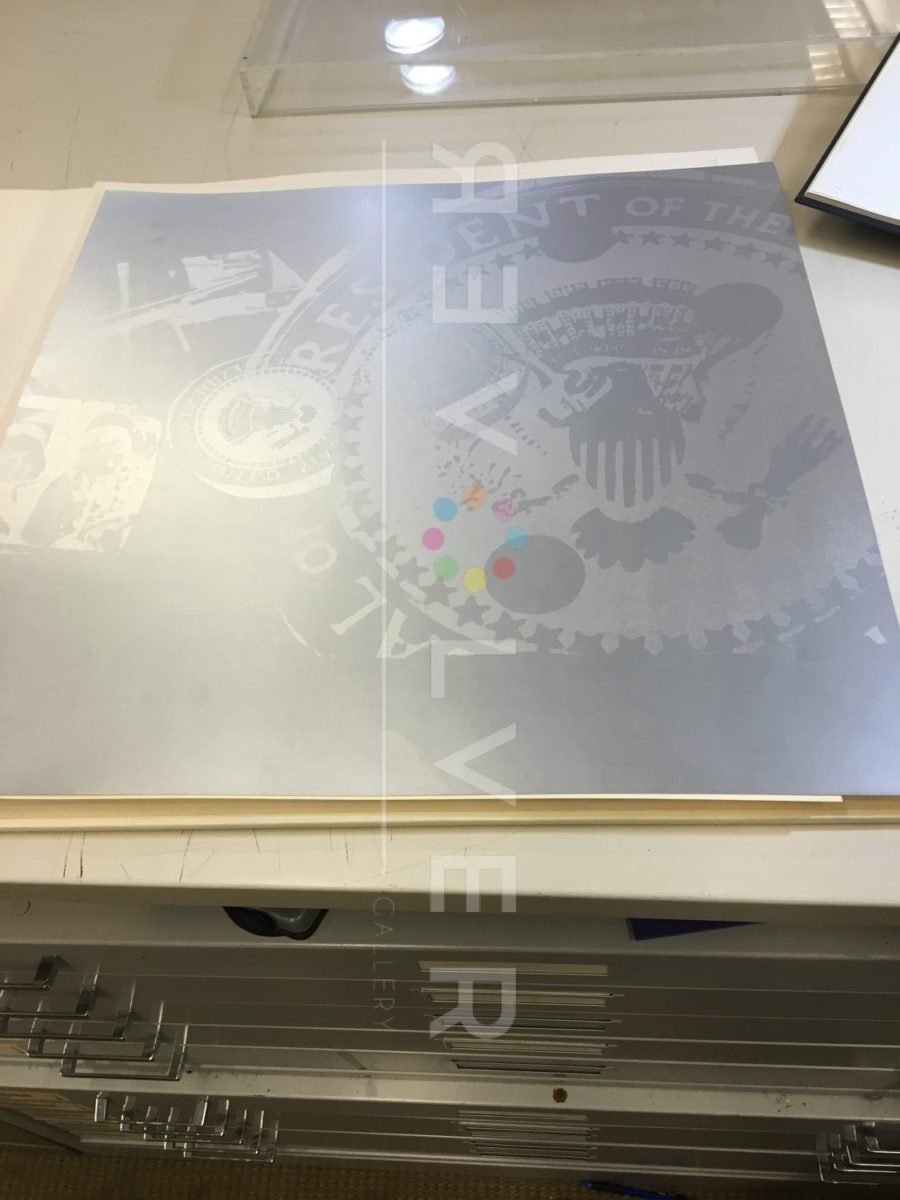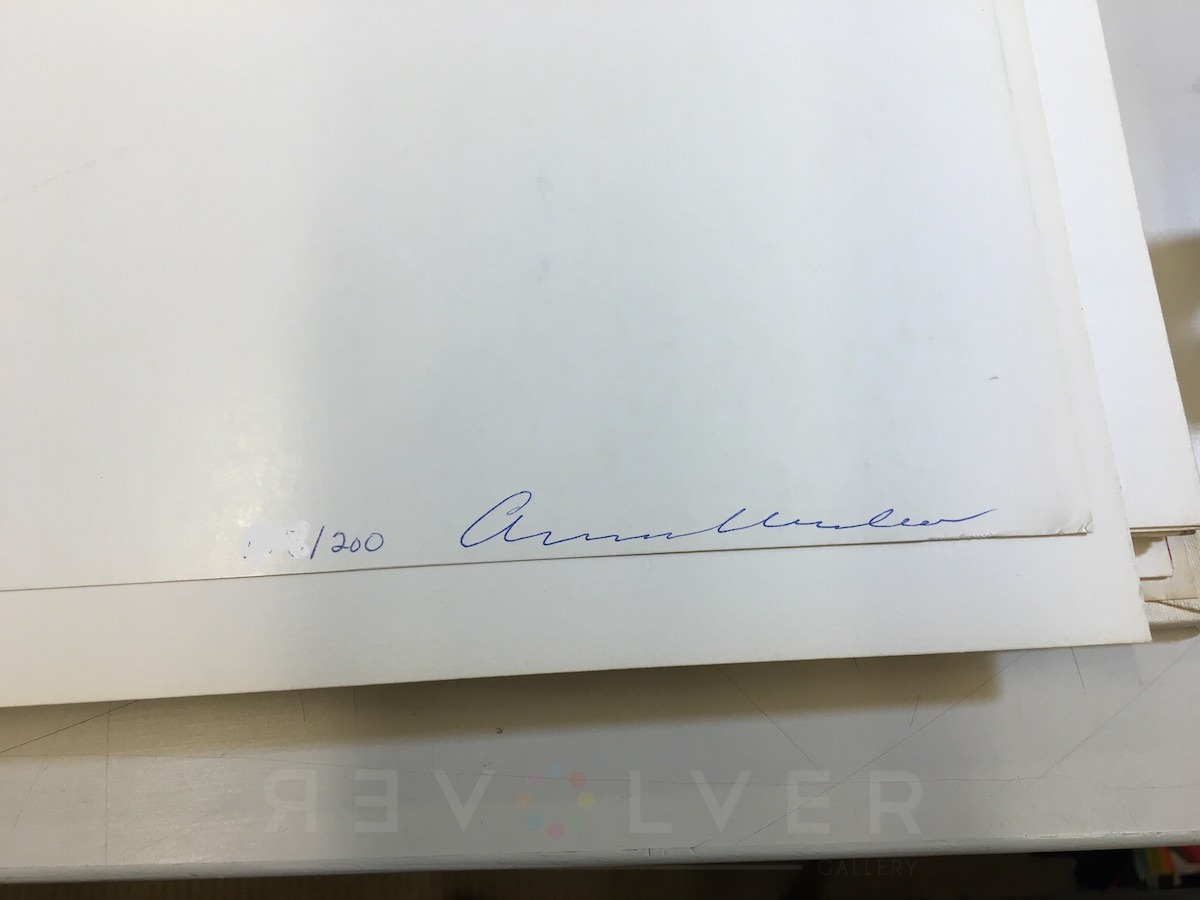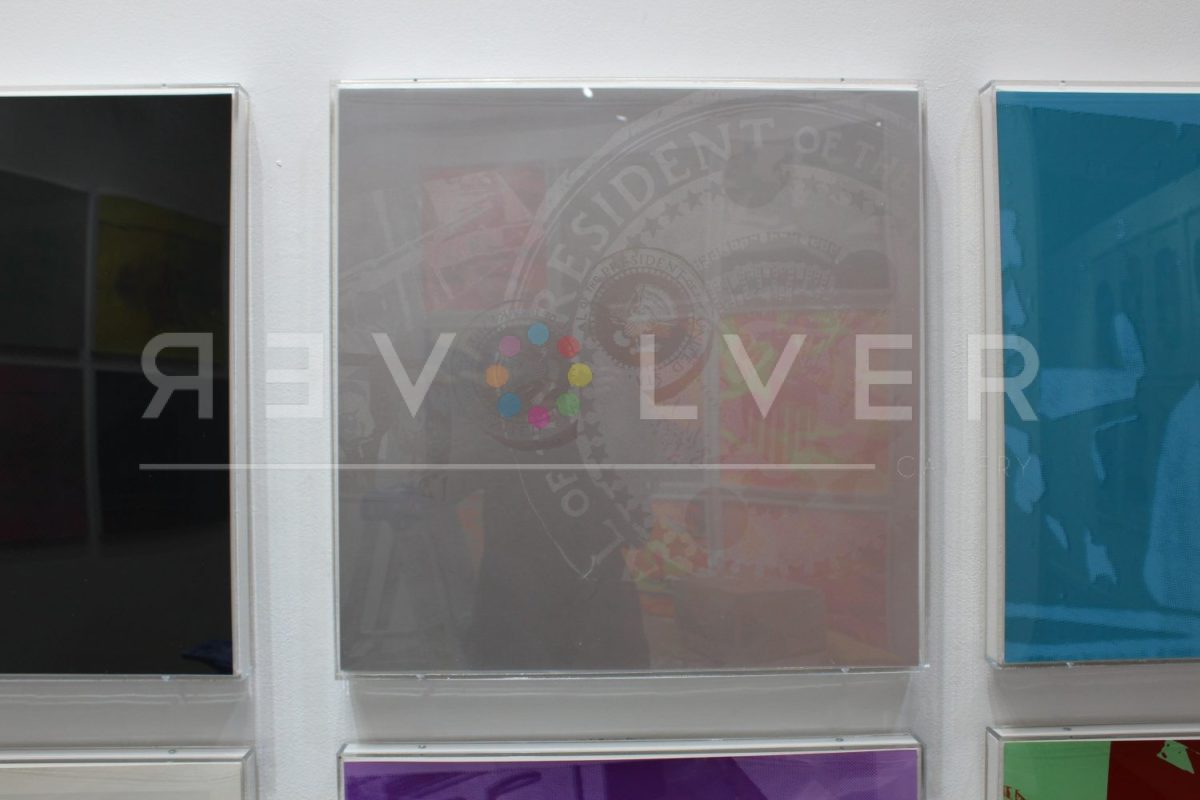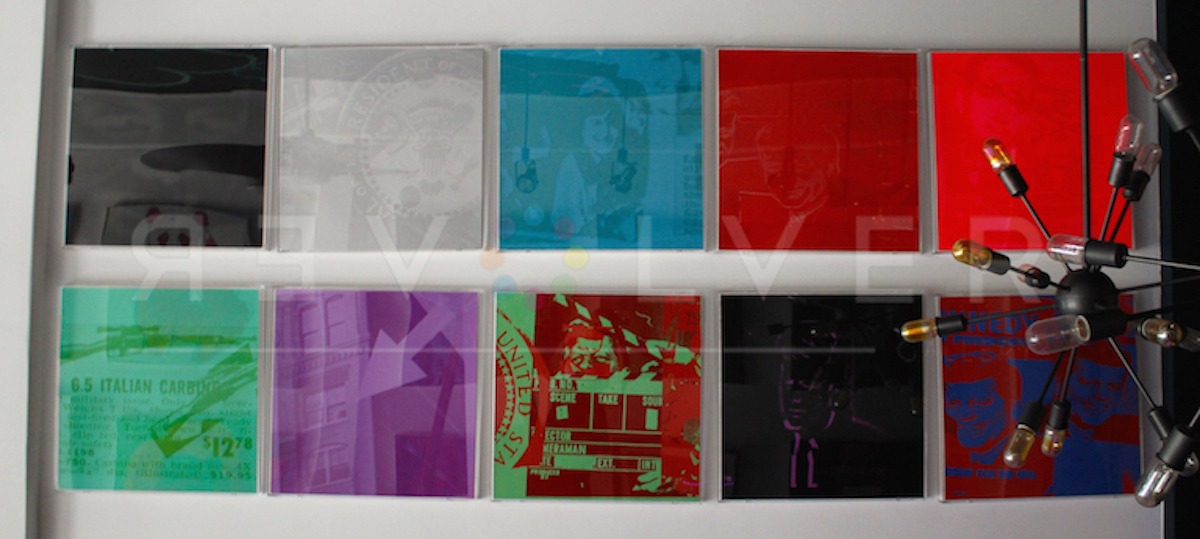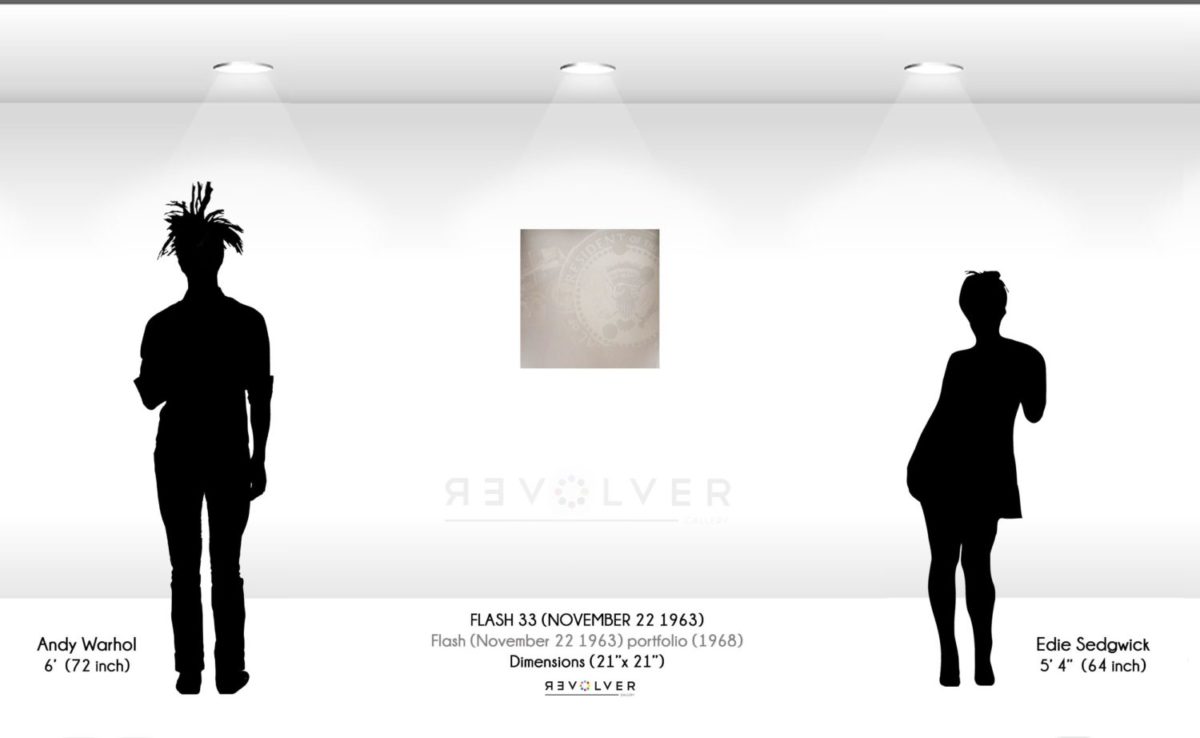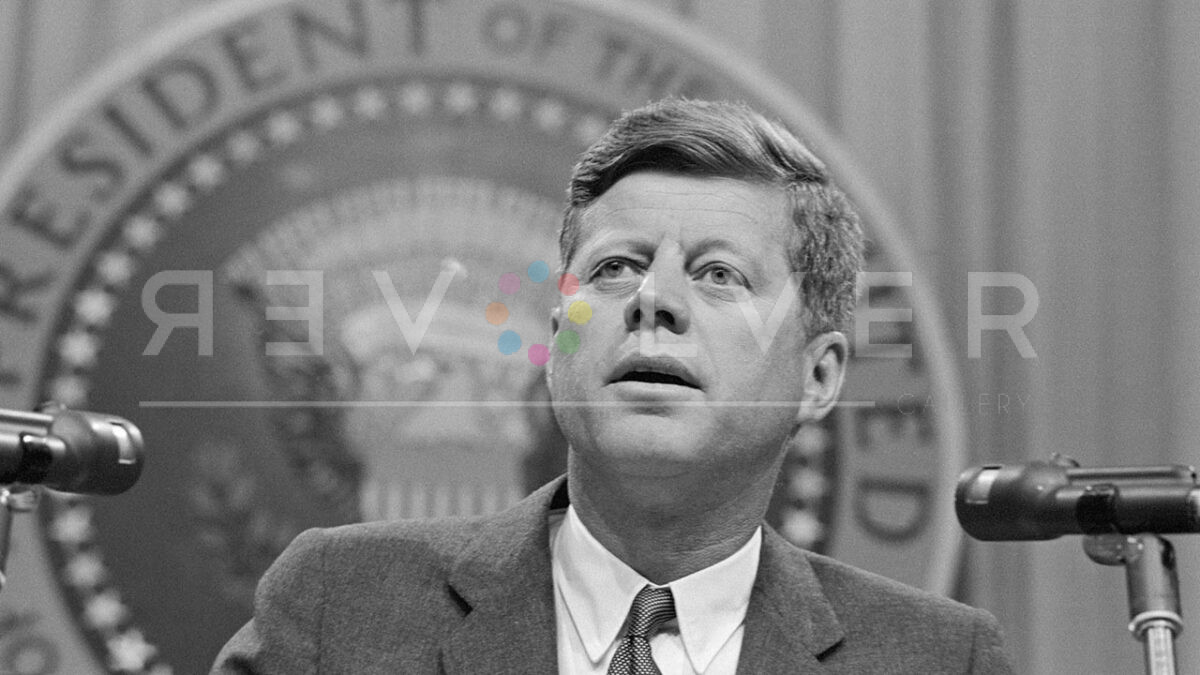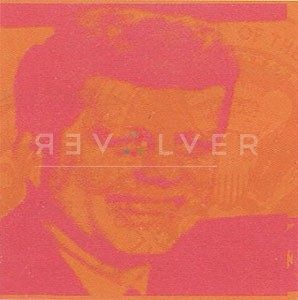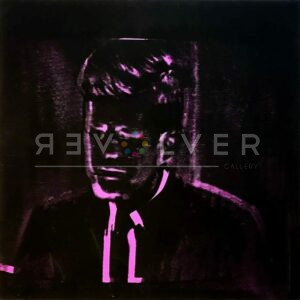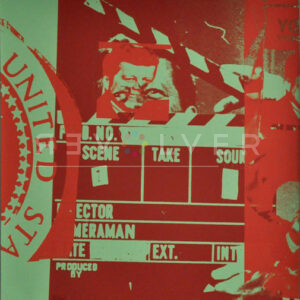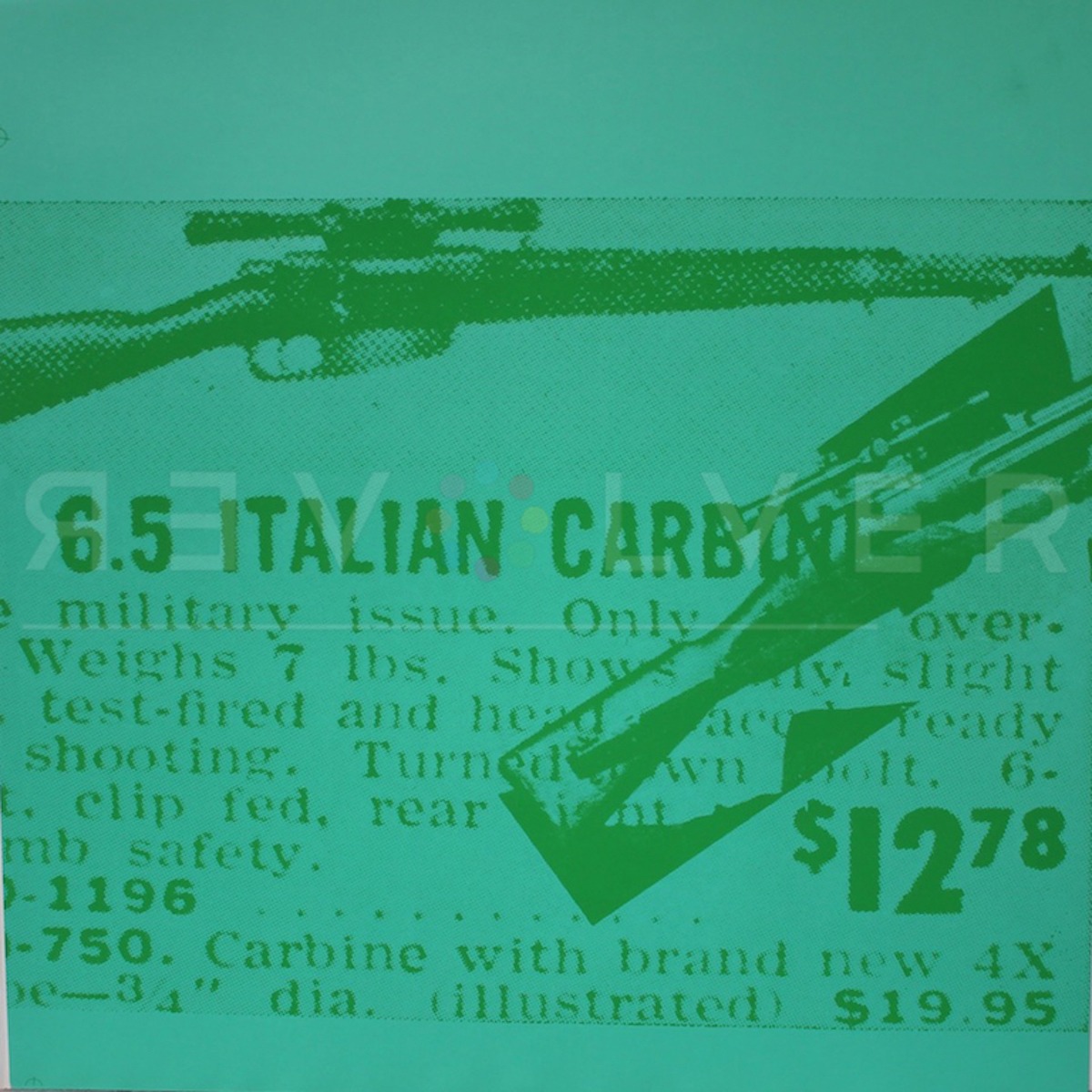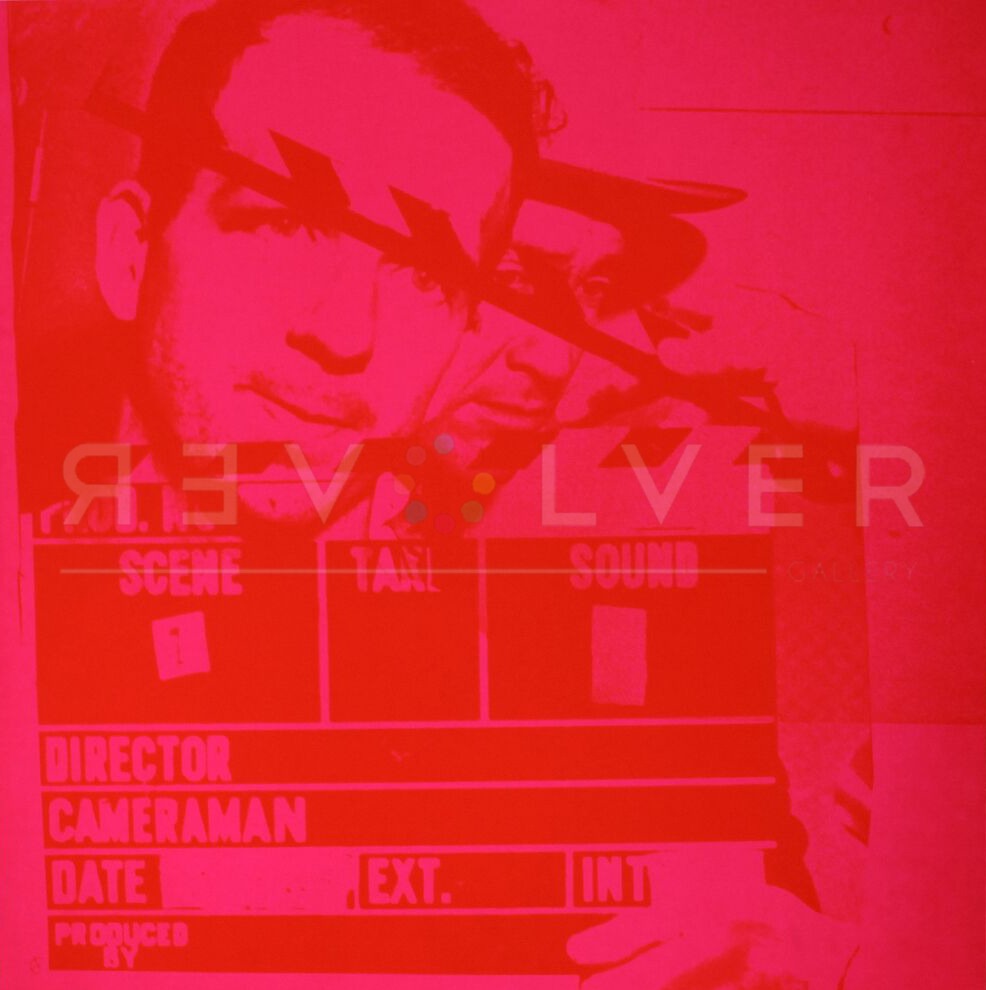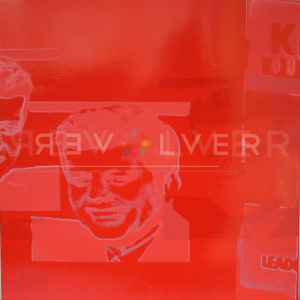Flash 33 by Andy Warhol is a screenprint from the artist’s dramatic Flash series. On November 22nd, 1963, the assassination of President John F. Kennedy shocked the world and brought the country to a standstill. What began as a motorcade ride through the sunny streets of Dallas quickly turned into a gruesome nightmare when a former U.S. marine shot the president. In an instant, the tragic event became a defining moment of the decade, and Warhol absorbed the cataclysm from a distance. It was characteristic of the artist to comment on subjects that gripped mass media. For weeks afterward, the same haunting images flashed over and over again on a nearly constant loop. Aptly named, Warhol’s Flash series utilized news clippings and photographs to depict the American media’s reaction to the assassination.
As the shocking news unfolded, Warhol was busy painting in his studio. “I don’t think I missed a stroke,” he said. “I wanted to know what was going on out there, but that was the extent of my reaction…What bothered me was the way the television and radio were programming everybody to feel so sad.” Afterward, Warhol tried to cheer up his friends by taking them out to dinner. “But it didn’t work, everyone was acting too depressed,” he lamented.
Five years after Kennedy’s assassination, Warhol completed the Flash series. In this portfolio, Warhol ruminates on the media’s obsession with tragedy. This print in particular highlights the Presidential Seal, an image that was undoubtedly “flashed” on the screens following Kennedy’s death. Flash 33 is one of the few prints that does not feature JFK or first lady Jackie Kennedy. It shows the Presidential Seal, washed out and fading like a distant memory.
Other prints in the Flash collection exhibit obfuscated images of Kennedy, an advertisement for the gun Lee Harvey Oswald used, and newspaper text superimposed over a photo of a smiling Jackie Kennedy. Two years prior, Warhol also published a standalone portrait of the first lady in her signature pillbox hat. Though Warhol didn’t consider himself overtly political, he never shied away from the subject. In the 1970’s, he would go on to paint figures like Jimmy Carter and Chairman Mao. In a portrait of Richard Nixon, he even scribbled the words “Vote McGovern” underneath in open support for the opposing candidate. To Warhol, political figures were not so different from the famous celebrities he normally painted. They paraded a grandiose image, oftentimes an image at odds with reality, to sell an idea to the masses. Most importantly, their mass appeal gave them transformative sway over culture—even after death.
Like works from his Death and Disaster series, Flash 33 questions the media’s portrayal of catastrophe. JFK’s assassination led to constant “news flashes” and flurries of various brutal and relevant imagery. At the same time, the portfolio delves into political themes. Though Warhol felt distanced from Kennedy’s death, these eleven prints show how deeply he reflected upon the events of that fateful day. Warhol knew how significant the assassination of such a beloved president would be; he wanted to capture it as a snapshot, a flash of history.
Photo credit: President John F. Kennedy speaking at a conference on March 29, 1962. (© Bettmann via Getty Images)

